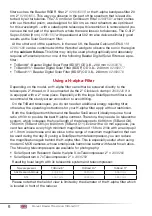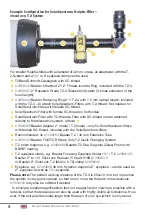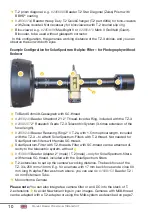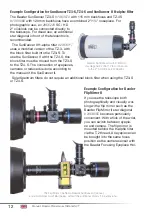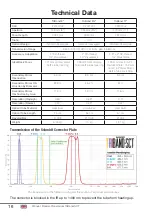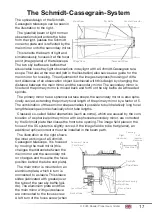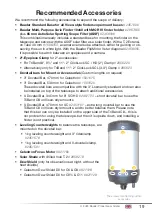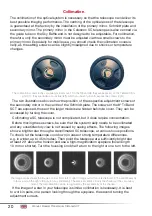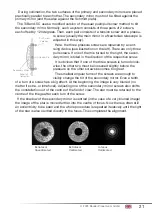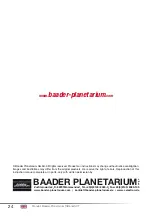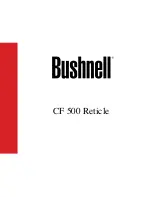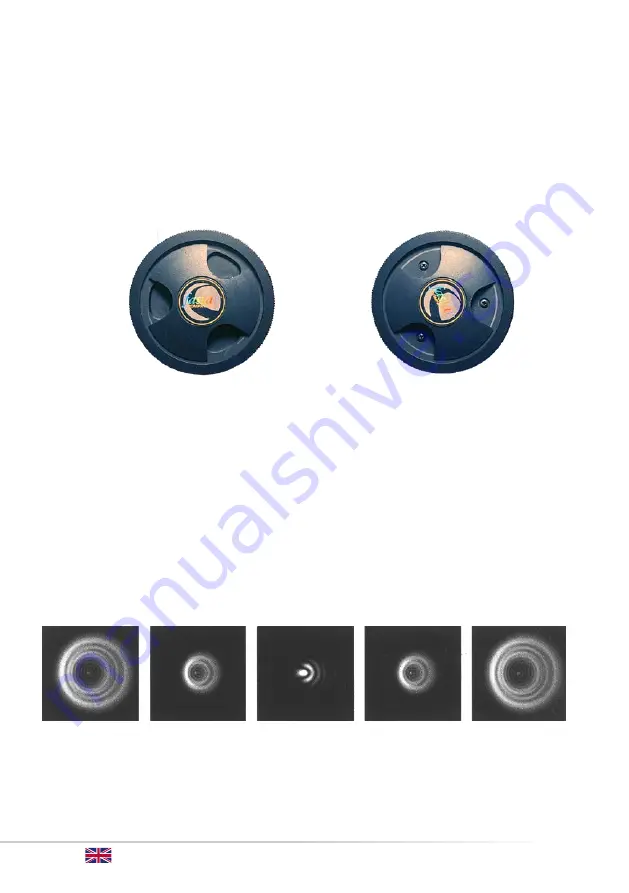
20
Manual: Baader Planetarium TriBand-SCT
Collimation
The collimation of the optical system is necessary so that the telescope can deliver its
best possible imaging performance. The centring of the optical axes of the telescope
is guaranteed at the factory by the installation of the primary mirror, Schmidt plate and
secondary mirror. The primary mirror in the Celestron SC telescopes is also centred via
the guide tube on the Sky Baffle and is not designed to be adjustable. For collimation,
therefore, only the secondary mirror must be adjusted via three small screws to the
primary mirror. Especially for mobile use, you should check the collimation occasio-
nally, as the setting screws can be slightly misaligned due to shocks or temperature
changes.
The two illustrations above show the position of the respective adjustment screws of
the secondary mirror in the centre of the Schmidt plate. The screws of the 8" TriBand
SCT are exposed, those of the larger models are hidden behind a cover. They can be
accessed by turning the cover.
Collimating a SC telescope is not complicated, but it does require concentration.
Before moving these screws, be sure that the system really needs to be collimated
and any unsatisfactory view is
not
caused by seeing effects. The following images
show a brighter star through a decollimated SC telescope, at various focus positions.
To check, let the telescope cool down (in case of strong temperature differences,
e.g. in winter, up to 45 minutes). Then point the telescope at a sufficiently bright star
at least 20° above the horizon and use a high-magnification eyepiece (focal length
10 mm or shorter). Turn the focusing knob half a turn to the right or one turn to the left.
The image series shows the image of a star (from left to right) strongly out of focus (extrafocal), in the middle exactly
in focus and on the right strongly in focus (intrafocal). The black eccentric circle is the shadow of the secondary
mirror. The decollimation can be recognised by the eccentricity of the shadow.
If the image of a star in your telescope is similar, collimation is necessary. It is best
to work in pairs, one person looking through the eyepiece, the second turning the
adjustment screws.
The collimation screws in the secondary mirror mount. On the Triband C8 they are exposed, on the TriBand C9¼
and C11 they are under a cover flap (left), which you have to turn to expose the screws (right).

